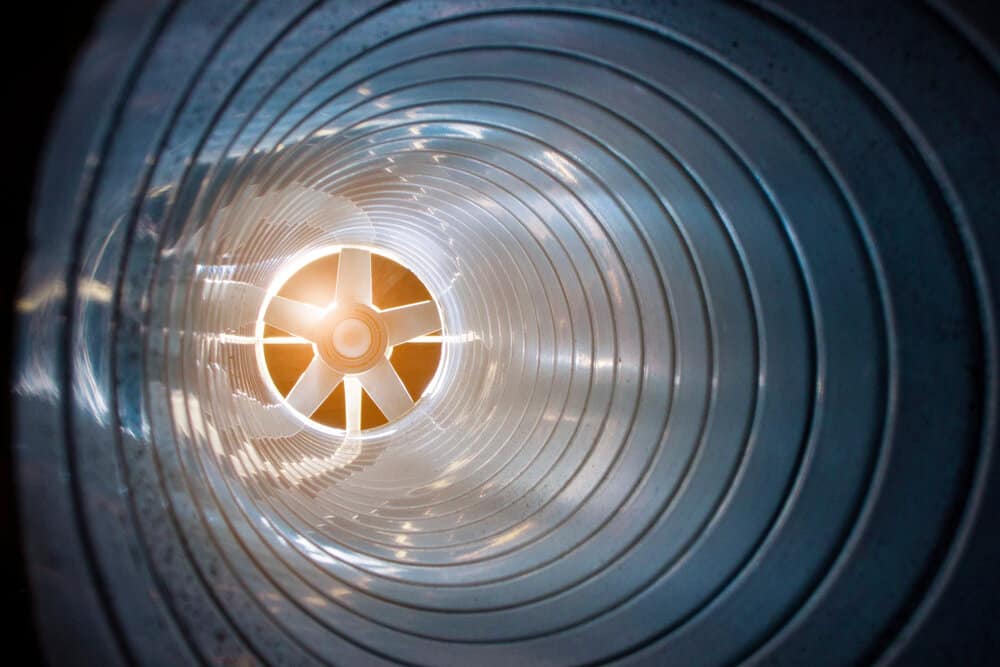
How To Stop Condensation On Your Air Ducts
In 2017, 6% of all insured homes in the U.S. had a claim. Water damage and freezing claims ranked as the second-most common type of claim filed.
But what if your home belongs in the 5% of uninsured homes, and you experience water damage?
As a Seattle, WA homeowner, your water damage repair costs may run from $2,00 to over $7,000.
And you know what? That condensation — or sweat — in your air ducts may be a sign of worsening water damage.
But what causes condensation in your home’s ductwork in the first place? How can it signal or even lead to water damage?
Keep reading; we’ll address all these questions and more in this post!
Condensation 101
To understand why your air ducts sweat, let’s have a quick science refresher. So, what is condensation?
Condensation is when water vapor transforms into a liquid. One way that this happens is when the air cools down to or past its dew point.
Imagine this. You take out a can of soda from the fridge and expose it to Seattle’s 76 °F summer temperature. In a few seconds, you’ll see droplets of water forming on the outside of the can.
Those water droplets are a type of condensation or condensed water. They formed because the warm air cooled down to its dew point by the cold soda can.
Now that you recall what condensation is let’s answer the next question:
How does condensation work when it comes to your air conditioning ducts?
It’s the same as with the can of soda, but this time, warm Seattle air comes into contact with your cold air conditioner ductwork. The lower the temperature of the air produced by your AC, the sweatier the ducts can become.
What Causes Condensation (Too Much Of It) In Your Home’s Air Ducts
What is condensation from your ductwork telling you, then?
Note that minimal condensation in air ducts is normal. If you see a tiny amount of dew outside of the ducts, it only means that the air is warm and that your air conditioning is on.
But if you see large water droplets that keep appearing, poor insulation is a likely culprit. Too much moisture in your indoor air is also a possible cause. Furthermore, filthy air filters and clogged ducts can exacerbate this condensation issue.
Lack Of, Damaged, Or Low-Quality Insulation
How does a lack of insulation or low-quality insulating materials contribute to condensation? For starters, they’re not efficient in preventing heat from transferring onto your ducts. Instead, they allow heat (of the warm air) to reach the cold duct surfaces.
Excess Indoor Moisture
Experts recommend an indoor humidity level of between 40% and 60% for both comfort and health. Now, as awesome as Seattle is, it’s one of the most humid cities in the country, with an average relative humidity of 73.3%.
If you keep your air conditioner well-maintained, it should help lower indoor humidity.
But if you have plumbing and roof leaks or damp basements, those can drive humidity levels up. If you had a recent indoor flooding or sewer backup problem, that can also raise humidity levels. Cooking without proper ventilation and drying your clothes indoors are also common causes.
All these promote indoor condensation, especially when you run your AC. The higher the relative humidity, the greater the odds of your ducts sweating.
Why You Should Care About Your Sweating Air Ducts
Why should condensation in your air ducts warrant so much attention? After all, they’re only small droplets of water.
They may look small, but their adverse effects on your home and health can be massive. Let’s take a look at some of these effects.
It Can Affect Your Home’s Insulation
Condensation from the air conditioner ducts can drip onto your home’s insulating materials. The weight and dampness can compress the insulation, reducing the insulation’s R-value. The more the insulation compresses, the less it can insulate your home.
Keep in mind that your insulation helps you save up to 10% on your yearly energy bills. If its R-value goes down, you’ll see a spike in your electricity bills.
Sweaty Air Ducts Add To Indoor Moisture,
Excessive indoor moisture levels promote bacterial growth, especially in molds. Molds themselves aren’t usually dangerous, but their spores can lower indoor air quality. Mold spores can also trigger allergic reactions or asthma attacks.
Furthermore, molds can damage your home’s structural components. Give these bacteria enough time, and they’ll eat through almost anything they grow on. That includes your home’s building materials, like wood, and even your pricey furniture.
Those Water Droplets Can Turn Into Serious Water Damage
Building dampness itself can cause corrosion or decay in building materials. When this happens, your home can lose its thermal capacity. Worse, prolonged, excessive indoor moisture can compromise your home’s structure.
Don’t Sweat It: Prevent Duct Condensation
Now that you know how sweaty ducts can make you (and your wallet) sweat too, here’s what you can do to prevent it.
Insulate Your Ductwork
If you don’t have duct insulation yet, it’s best to have it installed before summer. That way, there will be no chance for warm air to reach the cold surfaces of the ducts. No contact between these two means no condensation will occur.
Repair Damaged Insulation
If you do have insulation, but it has cracks or tears, get that repaired or replaced. The insulating materials should be a snug fit around the ducts, otherwise, warm air can still seep in.
Keep Your Air Filters Clean
New or clean HVAC filters can help cut your energy consumption between 5% and 15%. At the same time, filthy filters can contain pollutants that lower your home’s indoor air quality.
Dirty filters can also contribute to duct sweating because they restrict airflow. This not only compromises your AC’s cooling efficiency but also its dehumidifying abilities. Meaning, it’s not removing excess moisture in the air inside your home.
HVAC filters usually need a replacement or thorough washing once every month. But if Seattle’s air quality drops — like it did last year due to wildfires — change them more often.
More frequent filter replacement is also vital to homes with pets, as their fur can clog up filters. Do the same if someone in your household smokes, or better yet, ban indoor smoking.
Stay On Top Of Duct Maintenance
Like in air filters, human hair, pet dander, dust, debris, and even dead insects can clog up your ducts. Too much of these in the ducts also restrict air conditioner airflow. From there, the same dehumidifying problems can occur.
Unlike air filters, though, cleaning ductwork isn’t as easy as they’re often hard to access. It’s best to schedule ductwork maintenance and cleaning with a professional HVAC contractor. They have specialized cleaning and vacuuming tools that can unclog those ducts.
Moisture Control Tips For Your Entire Home
Since a higher indoor humidity level can make your air conditioner ducts sweat, you should keep it low. Here are a few moisture control tips you can do to avoid stuffy, sweat-inducing air inside the home.
Ventilate
Ventilation helps drive excess moisture and indoor air pollution outside of your home. Prioritize the kitchen and bathrooms, where there’s a lot of water used and heat generated. Installing and using exhaust fans in these rooms are key to proper home ventilation.
Don’t Dry Your Clothes Indoors
Except during winter, when indoor clothes drying can help increase low humidity levels. But in the summer, take advantage of the sun’s glorious warmth to dry your clothes!
Not only will this help prevent adding to indoor moisture — but it can also save you up to $200 on energy bills. Those savings come from completely ditching your electric- or gas-powered clothes dryer.
Seal Drafts & Gaps
Air leakage occurs in homes that have a lot of cracks and gaps. During windy or rainy days, excess air and water enter these buildings. All these can contribute to increased indoor moisture levels.
You can prevent air leakage by sealing drafty windows with caulking or weather-stripping. You should also seal gaps in doorways. Plug the holes where electrical wires from outside enter your home, too.
Fix Plumbing Leaks
A single faucet leaking 60 drips of water in a minute already wastes five gallons of water in one day. Leave it as is; you’ll waste 1,825 gallons of water in one year.
But leaks aren’t only causing spikes in your water bills — they can also cause moisture problems. The more leaking faucets or pipes you have, the higher the indoor humidity level will be in your home.
If you notice these plumbing leaks, contact your local plumber to get them fixed.
Get Those Roof Leaks Repaired
It’s (almost) always rainy in Seattle, and your leaky roof can be letting those raindrops into your home. With those roof leaks comes higher indoor moisture that increases the risks of condensation.
If you haven’t had roof maintenance in a while, or your roof is old, chances are, it already has leaks. Get in touch with a roofing contractor to get those leaks sealed and prevent indoor water damage.
Don’t Let Condensation Affect Your Home’s Indoor Air Quality
Now that you know what causes condensation and how to avoid it, do what you can to prevent it! Start with having your air ducts cleaned — they may not look dirty on the outside, but they may be filthy inside.
Ready to address your sweating air ducts? If so, then we can help! Get in touch with us now so we can help address your indoor condensation concerns.
